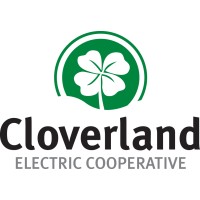The following lists Cloverland Electric Cooperative's accounts (pages) on major social platforms, including Facebook, Twitter, Youtube, Instgram, LinkedIn, etc. You can find the support information (solution) of related problems through these social pages, and you can also use Cloverland Electric Cooperative's support phone number, support email, or direct access to all Cloverland Electric Cooperative customer service contacts.
Cloverland Electric Cooperative Overview
Cloverland Electric Cooperative is focused on being environmentally responsible while providing exceptional service to its members through the delivery of safe, reliable and affordable electricity.
Cloverland Electric Cooperative was founded in 1938. Prior to 1936, much of rural america was without electricity. In fact, it wasn’t until the passage of the Rural Electrification Act, under President Franklin D. Roosevelt’s New Deal, that electricity would begin its move into America’s rural countryside. Electric cooperatives were organized to provide this service and make the dream of electricity on the farm a reality.
When the lines were originally energized, Cloverland brought power to 1,090 co-op members. Today, the company serves 42,000 accounts, including electric service to more islands than any other cooperative in the nation.
In 2010, the cooperative doubled in size through the acquisition of Edison Sault Electric Company. Cloverland now maintains local control of the hydroelectric plant in Sault Ste. Marie. From 1910-1963, the plant was used to generate electricity for the Union Carbide complex located on that property. In 1963, Union Carbide decided to sell the complex, providing an opportunity for Edison Sault to purchase the facility and convert it into one capable of producing electricity for consumers in the area. The plant was purchased by Edison Sault in 1963.
The Seven Cooperative Principles
1) Voluntary and Open Membership
2) Democratic Member Control
3) Members’ Economic Participation
4) Autonomy and Independence
5) Education, Training, and Information
6) Cooperation Among Cooperatives
7) Concern for Community
| Industry | Utilities |
| Headquarters | Dafter, Michigan |
| Company size | 51-200 employees |
| Website | http://cloverland.com |

